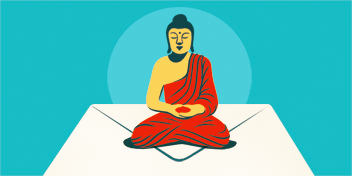Tricycle is pleased to offer the Tricycle Talks podcast for free. If you would like to support this offering, please consider donating. Thank you!
In recent weeks, reporters, activists, and others have drawn parallels between the global pandemic and the climate crisis. It seems early to say, but we can sense that the two problems are more related than we think, as they are both challenges that we all must face together. Despite the fear, panic, and pain that rages on in our world, Joanna Macy says that she’s lucky to be alive in this moment—because when everything starts to unravel, we have an opportunity to rediscover our deep belonging with the Earth.
No voice has been as clear or as compelling as Joanna Macy’s in the intersection that lies between Buddhist practice and ecological movements. An environmental activist, author of eight books, and a scholar of Buddhism and deep ecology, Joanna has been on the front lines of the environmentalist movement for decades. In recent years, as our impact on the environment has become both more apparent and more perilous, activist groups like Extinction Rebellion and others have been turning to Joanna’s work as a source of inspiration. A new book, A Wild Love for the World: Joanna Macy and the Work of Our Time, out today, celebrates her contributions with a selection of Joanna’s essays as well as writings by the many people she has inspired.
Tricycle’s Editor and Publisher James Shaheen talks to Joanna about how she believes we can move forward in a time of great despair—and how we can transform our despair into action.
Tricycle Talks is a podcast series featuring leading voices in the contemporary Buddhist world. You can listen to more Tricycle Talks on Spotify, iTunes, SoundCloud, Stitcher, and iHeartRadio.
Thank you for subscribing to Tricycle! As a nonprofit, we depend on readers like you to keep Buddhist teachings and practices widely available.
